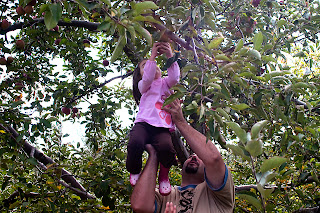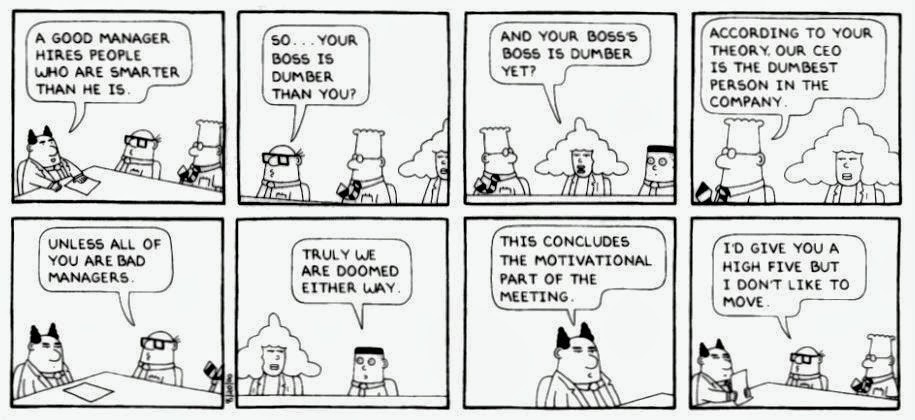The Power of Collaboration
Great Groups are able to accomplish more than talented individuals acting alone.
"None of us is as smart as all of us." ~ Bennis and Biederman

Front row from left to right: Irving Langmuir, Max Planck, Marie Curie, Hendrik Lorentz, Albert Einstein, Paul Langevin, Charles Eugene Guye, Charles Wilson, Owen Richardson.
Second row: Petrus Debye, Martin Knudsen, William Lawrence Bragg, Hendrik Kramers, Paul Dirac, Arthur H. Compton, Louis de Broglie, Max Born, Niels Bohr.
Back row: Auguste Piccard, E. Henriot, Paul Ehrenfest, Edouard Herzen, Theophile De Donder, Erwin Schrodinger, J.E. Verschaffelt, Wolfgang Pauli, Werner Heisenberg, Ralph Howard Fowler, Leon Brillouin."
"Both of us admit we couldn't have done it without the other.... our advantage was that we had evolved fruitful methods of collaboration." ~ Watson and Crick, winners of the Nobel prize for discovering the double helix structure of DNA
"No more piece-by piece, step by step production. Now it's teams. Teams of product and manufacturing engineers, designers, planners, financing and marketing people - together from the start.... It's how we built Dodge Viper... from dream to showroom in three years, a record for US car makers. From now on, all our cars and trucks will be higher quality, built at lower cost, and delivered to the market faster." - Chrysler
Synergy ~~~~~~~~~~~~~~~~~~~~~~~~~~~~~~~
The whole is greater than the sum of it's parts
1 + 1 = 3
1 bird + 1 bird = 2 birds + flying formation + communication + offspring + social orders + a myriad of other entities which would never have existed if the two birds were isolated from one another.
The whole is created from both the parts (birds) and the interaction between the parts (offspring, communication, flow of energy information etc.)
Synergy is the interaction of multiple elements in a system to produce an effect different from or greater than the sum of their individual effects. The term synergy comes from the Greek word synergia συνέργια from synergos, συνεργός, meaning "working together"
Synergy means that teamwork will produce an overall better result than if each person within the group were working toward the same goal individually.
Synergy examples:
- physics: combinations of quarks that produce protons and neutrons
- Chemistry - hydrogen and oxygen make water
- biology - honeybee colonies
- Medication - sometimes a combination create a greater response than summing the individual stimuli
- Toxicological synergy - chemicals individually considered safe might pose unacceptable health or ecological risk in combination
- Human synergy: Each on their own is too short to pick the apples, but working together, they are tall enough.
Corporate Synergy - Merger benefit
Oil companies share platform costs etc.
Positive synergy:
improved efficiency in operations, greater exploitation of opportunities, and improved utilization of resources.
Negative synergy:
negative effects on production like reduced efficiency of operations, underutilization of resources and disequilibrium with the external environment.Group cohesion
positive effects
- increase interactions and communication between members
- Common goals, interests, friendship, and support
negative effects
- Risky shift phenomenon - the tendency of a group to make decisions that are riskier than those that the group would have recommended individually.
- group think - members' striving for unanimity overrides their motivation to appraise realistically the alternative courses of action
Emergence~~~~~~~~~~~~~~~~~~~~~~~~~
Complex systems and patterns from simple interactions.
"Every resultant is either a sum or a difference of the co-operant forces; their sum, when their directions are the same -- their difference, when their directions are contrary. Further, every resultant is clearly traceable in its components, because these are homogeneous and commensurable. It is otherwise with emergents, when, instead of adding measurable motion to measurable motion, or things of one kind to other individuals of their kind, there is a co-operation of things of unlike kinds. The emergent is unlike its components insofar as these are incommensurable, and it cannot be reduced to their sum or their difference." - GW Lewes

~~~~~~~~~~~~~~~~~~~~~~~~~~~~~~~~~~~~~~~~~~~~~~~~~~~~~~~~~~~~~~~~~~~~~~~~~~
Engineering requires teams:
Boeing 747 aircraft
- contains over 5 million components,
- required over ten thousand person years of design team.
- Thousands of workers & 3 years to design it.
Concurrent Team Engineering:
Everyone racing together
NOT a relay!

To maximize speed - Marketing, Manufacturing & Development departments all work in parallel with one another. (instead of working like a relay race with only one person running at a time)
Speed matters!
A six month delay in getting to market reduces a product's profitability by a third over its life cycle.
"Reduce product development time to one third, and you will triple profits and triple growth" - Business Week
Teams make the design process go faster.
(The 747 would have taken 10,000 years to design and produce without team work.)11.3 Tuckman's 5 Team Growth Stages:
1. Forming
The "nice to meet you" stage - group members are shy & self-conscience, ice-breaking activities are needed etc.

2. Storming
Cliques form, dissension over who is responsible for what, criticism of leadership, frustration over task group is called to perform.
effective groups:
- actively looked for the points in which they disagreed
- encouraged conflict amongst the participants in the early stages of the discussion.
ineffective groups:
- felt a need to establish a common view quickly,
- used simple decision making methods such as averaging,
- focused on completing the task rather than on finding solutions they could agree on"
studies conducted by Jay Hall
3. Norming
People start dressing, talking, and acting like one another - group converges to common perspective, accepts one another instead of complaining and competing - learn to criticize without damaging feelings - interdependence and unity emerge.
Welcome to the Borg!
Question: Doesn't conforming to a group stifle creativity?
Fact: Groups can actually be more creative than individuals working alone!
- bounce ideas off one another,
- brainstorm
- "think tank" together.
Creative group example:

- Rubbermaid makes around 400 new products per year
- more than one new product per day!
- At least one third of Rubbermaid's $2 billion in annual sales come from newly created products less than 5 years old.
4. Performing
Everyone working together - pride in team, shared clear vision, everyone has individual tasks they are responsible for, but everyone helps one another. Leaders are indistinguishable from group members, everyone works together.
5. Adjourning
The project is completed
if successful, there is celebration and a feeling of accomplishment,
if a failure there are ill feelings and disappointment on adjourning.
Discussion: what does a successful team have?
a successful team has:
1) a common goal or purpose2) Leadership
3) unique individual talents
4) effective communication
5) collaboration
6) harmonious relationships
7) effective planning and use of resources
8.) good attendance and participation
Project Management
Project
Individuals organized by a product instead of a function.
ie - instead of grouping all the HR people together, and all the design people together - a project group consists of diverse people from research, marketing, HR, development, procurement etc. all working together.
Project Managers:
- plan work requirements
- create schedules
- direct the use of resources (people, money, materials, equipment)
- Track progress
- Keeps everyone focused
- Build team morale & harmony
- Run effective meetings
- Conflict = opportunity to improve
- Challenges team, promotes high performance
A project is successful if it is:
- completed on time
- within the budget
- to the desired quality
- efficient utilization of resources
see: http://www.pmi.org/
PERT Chart 12.7
Program Evaluation and Review Technique
Show task pathways
Milestones - round corners
Related tasks connected with lines


Critical Path:
- Longest string of dependent project tasks.
- Tasks on the critical path will hold up the project if they are delayed.












No comments:
Post a Comment